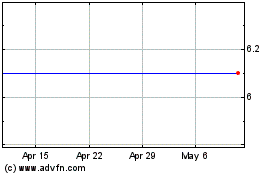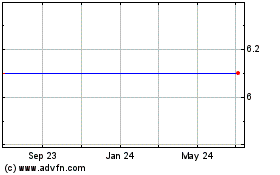Bankia Profit Edges Higher
November 02 2015 - 5:10AM
Dow Jones News
MADRID—Bankia SA reported a slight improvement in third-quarter
net profit from a year earlier, but a key driver of profitability
fell in the latest sign of Spanish banks' struggle to translate a
recovering economy into stronger loan growth.
Bankia, Spain's largest bailed-out lender that is still majority
owned by the government, said on Monday that net profit in the
third quarter rose to €300 million ($330 million) from €299 million
in the year-earlier period on slightly fewer loan-loss provisions.
That was roughly what analysts had expected Bankia to report,
according to a poll by data provider FactSet.
But net interest income fell 6.4% to €688 million in the third
quarter compared with the year earlier period, while
quarter-on-quarter Bankia's net interest income fell 1%.
While those declines were in line with what analysts were
expecting, the slump confirms the challenges faced by Spain's
banking sector, as laid bare over the past two weeks by the
earnings results of other Spanish lenders. Despite Spain's
expanding economy, many individuals and businesses remain focused
on paying off existing debt taken on during the country's property
boom, rather than taking out new loans. That "deleveraging"
process—as debt repayments outpace new loan issuance—is hurting
banks' net interest income, a key driver of profit for retail
banks.
Net interest income is the difference between what lenders pay
clients for deposits and what they charge for loans.
Bankia is the last major Spanish lender to report third-quarter
earnings this year, and the bank's decline in net interest income
mirrors the hit taken by other Spanish banks that have reported
third-quarter results.
Banco Santander SA's Spain unit and Caixabank SA also reported a
quarter-on-quarter drop in net interest income. Part of the decline
in net interest income in the third quarter, compared with the
second, is explained by the limited financial activity in August,
when Spaniards and many other Europeans take their summer
vacations.
Another factor: Some of the new loans that banks are selling are
less profitable than in previous quarters because of stiff
competition in lending to small and medium-size businesses, and a
continued decline in the Euribor rate.
Spanish banks had been offsetting some of the declines in loan
yields and sluggish loan volumes with income generated from selling
off their bondholdings. But many of those gains have already been
realized.
On the upside, Bankia and other Spanish banks have made progress
in lowering the amount of nonperforming loans on their books as
Spain's economy settles into recovery mode and fewer borrowers
become delinquent and more investors snap up loan portfolios.
Bankia said the ratio of bad loans to total loans was 11.4% as
of September, down from 12.2% as of June. The lender said its
capital ratio under international regulations, known as "fully
loaded" Basel III criteria, was 11.73% as of September.
Write to Jeannette Neumann at jeannette.neumann@wsj.com
Subscribe to WSJ: http://online.wsj.com?mod=djnwires
(END) Dow Jones Newswires
November 02, 2015 04:55 ET (09:55 GMT)
Copyright (c) 2015 Dow Jones & Company, Inc.
Banco Santander (NYSE:STD)
Historical Stock Chart
From Mar 2024 to Apr 2024

Banco Santander (NYSE:STD)
Historical Stock Chart
From Apr 2023 to Apr 2024
